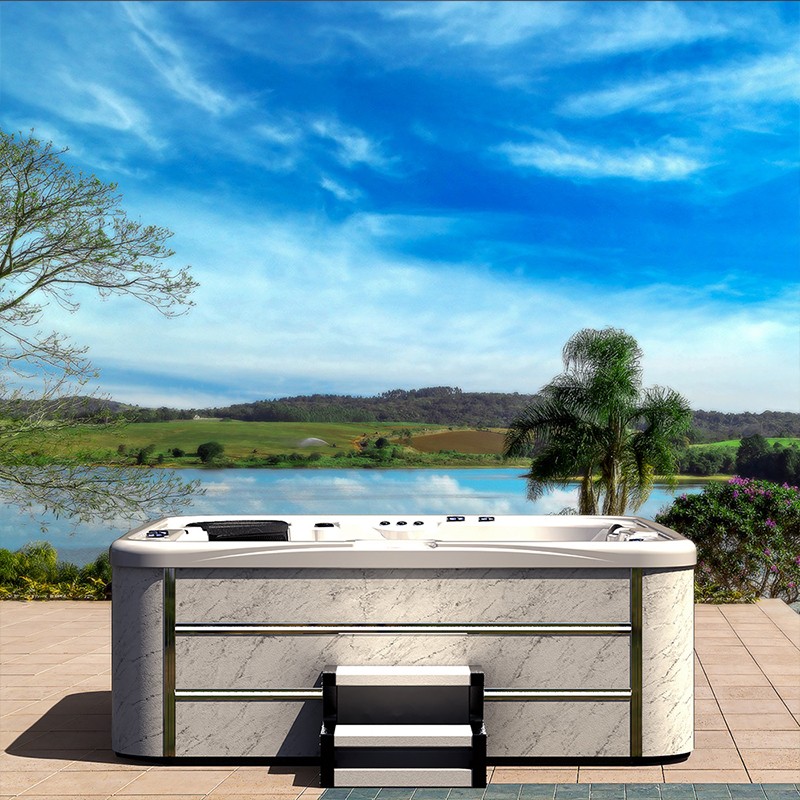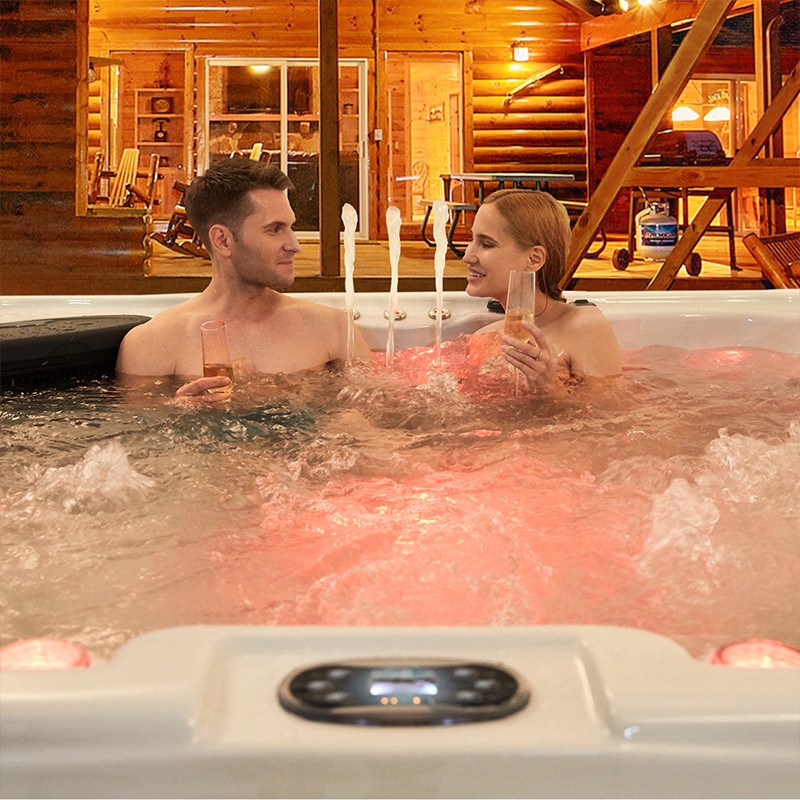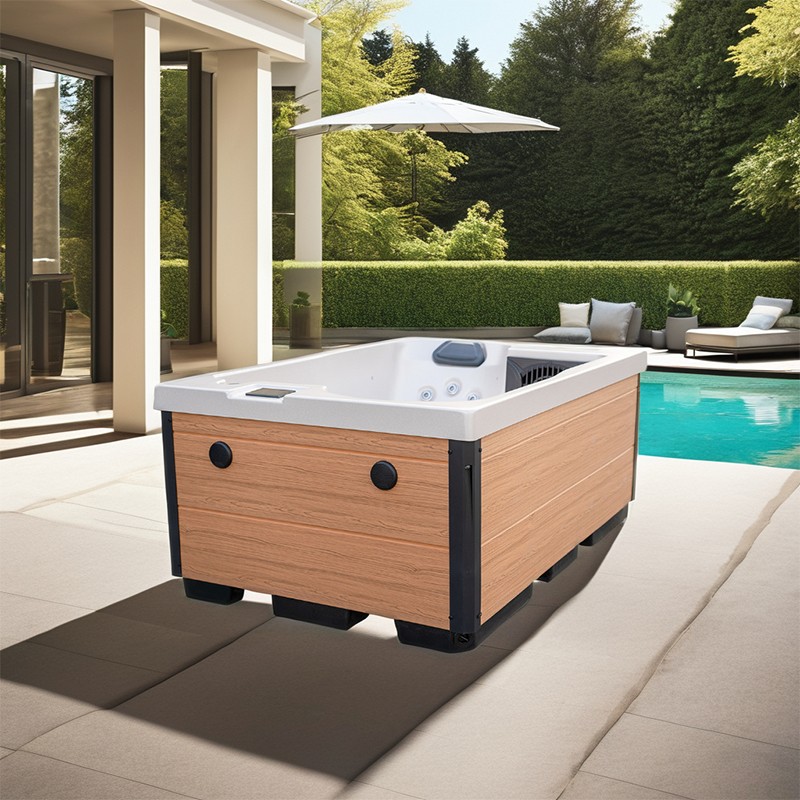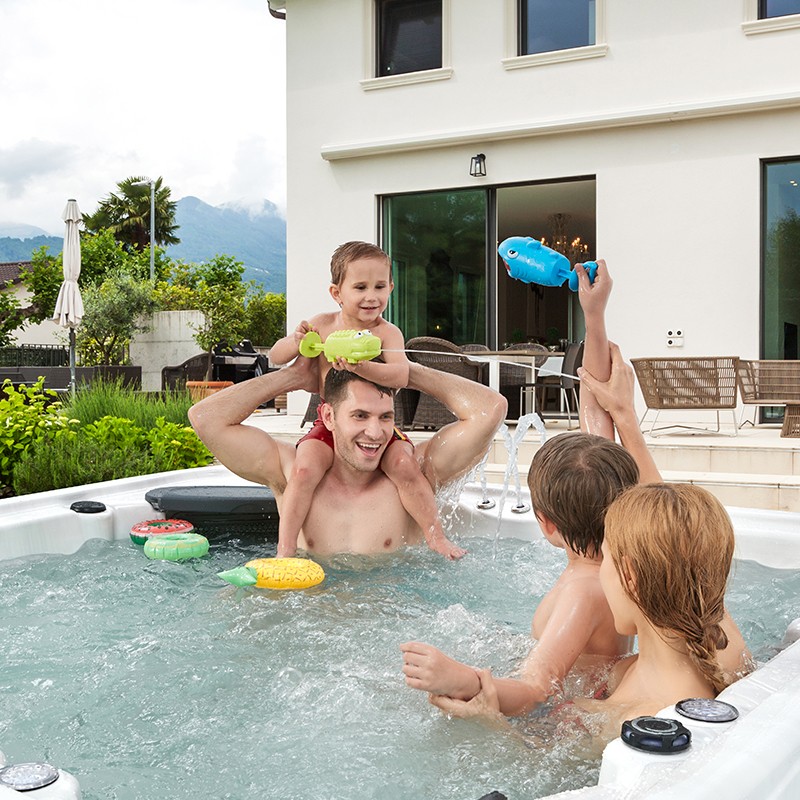
How hot should the water in an outdoor hot tub be kept when not in use?
2025-02-07 15:35The use of outdoor hot tubs has become a common form of entertainment and relaxation for many families and vacation spots, especially in the cold season, when you can enjoy the warmth and comfort of a hot tub at any time. However, for many hot tub owners, how hot the water in the hot bathtub should be kept when not in use has become an important question. Maintaining the right temperature is not only related to energy efficiency and electricity cost control, but also directly affects the life of the equipment and user experience.
This article will delve into how hot the water in an outdoor hot tub should be when not in use, why this temperature is chosen, and how to save energy and costs through proper temperature management. Through this article, you will learn the importance of choosing the right water temperature for the long-term maintenance of your hot bathtub and learn how to balance comfort and economy.

Why do you still need to keep the water warm when not in use?
Many people have this question: Since you don’t plan to use the hot tub frequently, why do you need to keep the water warm? Wouldn’t it be more energy-saving to just turn off the heater? In fact, keeping the water temperature of the hot tub is important for the normal operation and maintenance of the equipment. The following aspects explain why the temperature should be maintained:
Prevent water quality from deteriorating
The water in the hot bathtub is prone to breeding bacteria and other microorganisms if it is kept at too low a temperature for a long time. If the water temperature is kept within the appropriate range, the growth of microorganisms in the water can usually be inhibited. Generally speaking, the water temperature should be kept between 37-40°C (about 98-104°F), which is a range suitable for sterilization. Although it may not be a very high temperature, it helps to inhibit the growth of common bacteria and algae, thereby keeping the water clean.
Prevent damage to pipes and equipment
In cold climates, especially in winter, if the water temperature of an outdoor hot tub is too low, the pipes and other equipment are susceptible to damage from low temperatures, and may even freeze and crack. Maintaining the proper temperature can effectively prevent this from happening and extend the service life of the hot bathtub.
Save energy and costs
Although keeping the water warm when not in use may seem to increase energy consumption, it is actually a long-term way to save energy. Rather than reheating the water from a cooler temperature to a comfortable bathing temperature before each use, keeping the water temperature within a warmer but not excessive range can reduce the energy consumed by large heating steps.
Heating a hot bathtub from a cold state to a comfortable temperature for use consumes a lot of energy, especially when the outside temperature is low. If the water temperature is kept at a stable higher range when not in use, the heater will work intermittently, but the overall energy consumption is lower. Therefore, maintaining the water temperature properly is more energy-efficient than frequent heating.
Maintaining ready availability
One of the key benefits of a hot tub is that it is always available. This convenience is greatly reduced if you have to spend hours reheating it before each use. Maintaining the water temperature properly ensures that you can use the hot bathtub at any time without having to wait for a long heating process.

What is the ideal water temperature for a hot tub?
Different users may have different requirements for water temperature, but in general, experts recommend a temperature range of 26-30°C (about 79-86°F) for keeping the water warm when not in use. This temperature range inhibits bacterial growth, reduces energy consumption, and ensures that the equipment is not damaged by low temperatures.
Why choose a temperature range of 26-30°C?
The selection of the temperature range of 26-30°C is based on the following important factors:
Maximize energy efficiency
Within this temperature range, the hot bathtub heater will not start frequently, thus saving energy consumption. Although the water temperature is slightly lower than the standard temperature during normal use, the heater requires less power, so it is more energy-efficient to maintain this temperature for a long time.
Prevent water quality from deteriorating
A temperature of 26-30°C can still effectively inhibit the growth of some bacteria and algae, especially when combined with appropriate chemical treatment methods, the water quality can remain clean for a longer period of time. If the temperature is too low, the microorganisms in the water will multiply faster, and the water quality will quickly become turbid and unsanitary.
Maintain equipment safety
Especially in cold seasons, this temperature can prevent the water pipes from freezing and protect the internal equipment from the effects of low temperatures. Although it is not as effective as the high temperature sterilization of 37-40°C, it is enough to prevent accidental damage to the equipment when it is not in use.
Relationship between water temperature and environmental climate
The environmental climate is an important factor in determining water temperature management. Under different climate conditions, you may need to make appropriate adjustments to the water temperature.
Temperature recommendations in cold climates
In cold climates, especially in areas where the temperature often drops below zero degrees Celsius, it is very important to keep the water temperature of the hot tub above 26°C. This not only prevents the pipes and heating system from freezing, but also allows the water to heat up faster, saving a lot of heating time before each use.
Temperature recommendations in warm climates
If you live in a warmer area, the water temperature can be kept relatively low. For example, 26°C is enough to maintain water quality and reduce bacterial growth. In this case, you can even choose to turn off the heating system at certain times, but you must monitor the water temperature regularly to prevent the water temperature from falling below 20°C for a long time.
Are there special needs?
In addition to climate factors, personal special needs will also affect the choice of water temperature. For example, if you have specific health needs (such as arthritis, etc., which require warm water treatment), then you may need to keep the water temperature in a higher range, even close to the temperature during regular use.

How to keep the water warm when not in use?
To keep the water at the right temperature when not in use, here are a few ways to help you manage your hot tub's temperature and ensure optimal performance.
Use an efficient hot tub cover
An efficient hot tub cover is key to maintaining water temperature. Hot bathtub covers not only keep debris out of the water, but also keep heat in, preventing it from escaping. If your hot tub is located outdoors, it is recommended to choose a thick, well-insulated cover. This can effectively reduce energy loss, especially at night or in cold weather.
Automatic temperature control system
Modern hot bathtubs are often equipped with automatic temperature control systems. By setting a reasonable temperature range, you can ensure that the hot tub can automatically maintain the right temperature when not in use without having to adjust it manually. These systems automatically activate the heater according to changes in water temperature, maintaining a constant water temperature while saving energy.
Check equipment performance regularly
The heater and temperature control system are key equipment for maintaining water temperature, so it is important to check their working condition regularly. Ensuring that the heating system is not malfunctioning and regularly cleaning and maintaining these devices will help them work more efficiently, thereby reducing unnecessary energy consumption.
Use fans or sunshades
During the hot summer months, the water temperature of a hot bathtub may rise due to direct sunlight, even to a temperature that is not suitable for long-term storage. At this time, it is a good idea to install an awning or use a fan to help cool the hot bathtub. By blocking the sun or promoting air circulation, energy waste caused by excessive water temperature can be avoided.
Maintain the long-term health of the hot tub
In addition to temperature management, regular maintenance and care are also important measures to ensure the long-term and healthy use of the hot tub. Maintaining the proper water temperature when not in use, combined with the following maintenance measures, can extend the life of the equipment and ensure that it is always in optimal condition.
Water quality monitoring
Even if it is not used frequently, the water quality of the hot tub still needs to be monitored and treated regularly. Regularly test the pH value, bromine or chlorine content in the water, and add corresponding chemicals as needed to ensure that the water quality is always within a safe range.
Clean the filtration system
The filtration system of the hot bathtub is responsible for removing impurities and microorganisms from the water. It is very important to clean and replace the filter regularly. Especially when not in use, the filter element may easily accumulate impurities and scale, so keeping it clean can improve the efficiency of the filtration system and reduce pollutants in the water.
Drain and clean regularly
If your hot bathtub is not used for an extended period of time, it is recommended that you drain the tank regularly and clean it thoroughly to prevent scale and microbial buildup. A thorough drain and clean is usually recommended every 3-4 months, especially with frequent use.

Looking for a spa supplier that offers both quality and value? Guangzhou HuanTong Industrial is your one-stop destination for outdoor spas, Jacuzzis, and wellness solutions. With over 30 years of experience in the industry, we offer products certified by leading global standards such as CE, ETL, and ISO9001. We cater to businesses of all sizes, offering discounted wholesale prices, customized designs, and reliable supply. Don’t miss out on our promotions and low-cost deals for bulk purchases. Contact us today to get your personalized offer.
